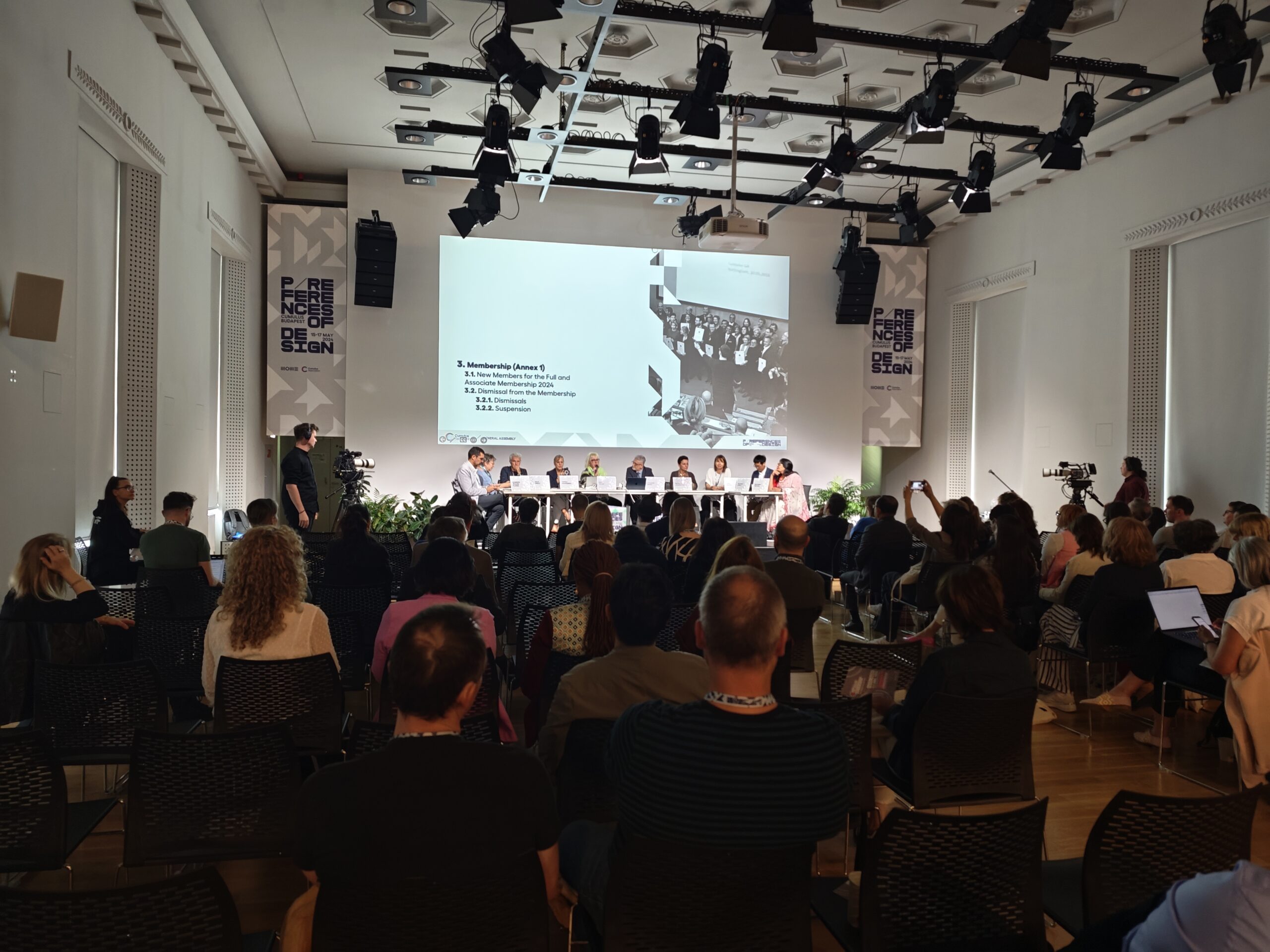Durante los días 15, 16 y 17 de mayo se realizó en la Universidad de Arte y Diseño Moholy-Nagy MOME la Conferencia CUMULUS Budapest 2024 donde se exploraron las tensiones y paralelismos en la cultura del diseño contemporáneo, en un contexto en el que el mundo enfrenta desafíos ecológicos, socioeconómicos y geopolíticos. En este marco, la profesora Eugenia Pérez de Mezquia del Departamento de Diseño de Interiores y ESDA Desis Lab, dentro del campo de investigación en diseño para la innovación social, presentó la comunicación “Humanizing high security spaces. Reformatories for minor offenders – The teaching and practice of design for social innovation towards vulnerable communities» en el track “Ways of living together” de la Dra. Boris Fehér, Senior Research y directora de MOME Innovation Center’s Social Design Hub, presentación moderada por el Dr. Juan Velasquez, Profesor de la Universidad de Linnaeus de Suecia.

“Humanizing high security spaces. Reformatories for minor offenders – The teaching and practice of design for social innovation towards vulnerable communities»
AUTHORS
Eugenia Pérez de Mezquia, Álvaro Albajez, Vanesa Gil, María Antonia Valverde
ESDA Escuela Superior de Diseño de Aragón
Abstact
Community-engaged design project between the students of design of Escuela Superior de Diseño de Aragón (ESDA) and the minor offenders interned in the Education and Internment Center by Court Order (CEIMJ Juslibol) Zaragoza, Spain.
The focus of the project is on teaching our students and practicing design skills with people living in poverty or at risk of exclusion, working with vulnerable communities to accelerate the transition to a fair and ecological society.
The practice of design involves intervention in a social group, and therefore we should incorporate the anthropological dimension in methodological terms. Man being spatial, all experience depends on the place where it happens (Herrera & De Oña, 2016)
A collaborative effort between students and vulnerable communities contributing to various aspects of design. A different approach and change of mindset applicable to teaching social design and design for social innovation (Mazini, 2015)
A reformatory for minor offenders is neither a prison, nor should it look like one (Pol, Esteve, García-Bores & Llueca, 1992)
Educational-formative and welfare institutions, and more explicitly correctional institutions, are organizations that have served, by satisfying the urgent basic needs of the vulnerable population, as an effective method of social control, and architecture plays a very important role in this. The main objectives are:
- The better use of space and its environmental conditions as spatial resources of intervention to facilitate therapeutic treatment.
- More dynamic environmental conditions that facilitate appropriation of the space by the inmates.
The first project «My personal space» developed in 2023 by the students of the 3rd year of Interior Design focuses on the individual room of the inmates, developing 14 proposals for more friendly and personalized rooms through the design of interior details and complying with the necessary safety conditions.
Surveys were conducted to measure the mood of the design students before, during and at the end of the project. The students who were initially against working directly with minor offenders, were in the end satisfied that they were actively involved.
During the ESDA DESIS Social Design Days experiences and projects of social innovation are shared publicly. Our students explained the project to the educational community.
The second project «Humanizing high security spaces» developed in 2024 by the 3rd year Interior Design students with the collaboration of 3rd and 4th year Graphic Design students focuses on the reception module, a liminal space where the minor is admitted for the first time and spends his first week of adaptation to the center until he is transferred to the module that correspond to him with other inmates.
Design students learn and discover in an immersive way the social dimension of design by developing new interpersonal skills.
The proposals were born from the dialogue between the designers and the inmates, as a process of deep knowledge of their needs and expectations, bringing together new points of view through participatory design.
The result confirms how small gestures in interior design make possible great improvements, creating an environment conducive to positive therapeutic development work.
REFERENCES
⦁ Expósito, D., & Peiró, P. (2023c, diciembre 10). 492 días en la vida del menor 21. https://elpais.com/espana/madrid/2023-12-10/492-dias-en-la-vida-del-menor-numero-21.html#.
⦁ Farbstein, J., & Wener, R. E. (1982). Evaluation of Correctional Environments. Environment and Behavior, 14(6), 671-694. https://doi.org/10.1177/0013916582146003
⦁ Herrera Pastor, D., & De Oña Cots, J.M. (2016). La importancia del ambiente de aprendizaje. Pedagogía ecológica en un centro de menores. Revista Fuentes, 18(1), 77-90. [Fecha de consulta: 24/01/24]. doi: doi: http://dx.doi.org/10.12795/revistafuentes.2016.18.1.05
⦁ Manzini, E. (2015). Cuando todos diseñan. Una introducción al diseño para la innovación social. Madrid: Experimenta Theoria.
⦁ Pol, E., Esteve, J., García-Bores, J., & Llueca, J. (1992). Centros de reforma de menores: la dimensión ambiental. INTERVENCIÓN PSICOSOCIAL, VOL 1 (No 2).
KEYWORDS
Design for social innovation, Vulnerable communities, Reformatories for minor offenders, Environmental psychology, Liminal spaces



La Asociación Cumulus es una de las organizaciones mundiales más destacadas en la enseñanza del diseño y el arte. Con 357 instituciones en 66 países, incluidas innumerables universidades emblemáticas y centros de conocimiento, es la red profesional más importante del mundo académico, sus miembros pueden asistir cada año a varias conferencias importantes, compartir conocimientos y resultados de investigación en grupos de trabajo y debatir sobre los temas más candentes del diseño, la innovación, la educación y la investigación.
Sitio web: https://cumulusbudapest2024.mome.hu/index.html

